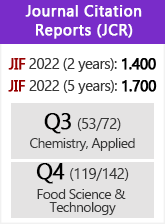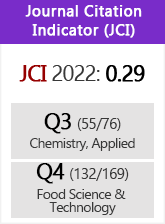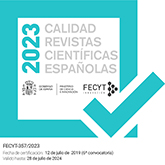Pharmaceutical applications and consequent environmental impacts of Spirulina (Arthrospira): An overview
DOI:
https://doi.org/10.3989/gya.0690181Keywords:
Arthrospira sp., Cultivation, Environmental impacts, GMO, Pharmaceuticals, SpirulinaAbstract
Recently, microalgae cultivation for different applications, including the production of nutritional and pharmaceutical active compounds has received increasing attention. Among the different genera, Spirulina (Arthrospira sp.) is one of the most promising blue-green microalgae (Cyanophyta) because it is rich in antioxidants, essential amino acids (EAAs), minerals, proteins, polyunsaturated fatty acids and vitamins. It has a high protein content (60-70% of the dry weight), which is a complete protein, i.e. containing all EAAs. Therefore, Spirulina is currently a commercial product with high nutritional value and also a significant source of complementary and alternative medicine. The objective of the present work was to review the pharmaceutical and therapeutic applications of Spirulina, especially its antioxidant, anti-inflammatory, anti-cancer, anti-microbial, anti-diabetic, anti-obesity and anti-toxicity properties. The results were obtained from experiments in the literature performed in vitro and in vivo using experimental animals. The main reported active ingredients in Spirulina include phycocyanin, tocopherol, β-carotene, caffeic acids and chlorogenic acid, which showed individual or synergetic effects. In addition, the present review discusses the future perspectives of genetically modified Spirulina as a source for industrial products while producing valuable biomass photoautotrophically. Furthermore, the consequent environmental impacts of large-scale cultivation of Spirulina are discussed.
Downloads
References
Abdel-Daim M, El-Bialy B, Abdel Rahman H, Radi A, Hefny H, Hassan A. 2016. Antagonistic effects of Spirulina platensis against subacute deltamethrin toxicity in mice: Biochemical and histopathological studies. Biomed. Pharmacother. 77, 79–85. https://doi.org/10.1016/j.biopha.2015.12.003 PMid:26796269
Abomohra A, El-Sheekh M, Hanelt D. 2014. Pilot cultivation of the chlorophyte microalga Scenedesmus obliquus as a promising feedstock for biofuel. Biomass Bioenergy 64, 237–244. https://doi.org/10.1016/j.biombioe.2014.03.049
Abomohra A, El-Shouny W, Sharaf M, Abo-Eleneen M. 2016. Effect of Gamma Radiation on Growth and Metabolic Activities of Arthrospira platensis. Braz. Arch. Biol. Technol. 59, e16150476. https://doi.org/10.1590/1678-4324-2016150476
Abomohra A, Eladel H, El-Esawi M, Wang S, Wang Q, He Z, Feng Y, Shang H, Hanelt D. 2018. Effect of lipid-free microalgal biomass and waste glycerol on growth and lipid production of Scenedesmus obliquus: Innovative waste recycling for extraordinary lipid production. Bioresour. Technol. 249, 992–999. https://doi.org/10.1016/j.biortech.2017.10.102
Arun N, Gupta S, Singh DP. 2012. Antimicrobial and antioxidant property of commonly found microalgae Spirulina platensis, Nostoc muscorum and Chlorella pyrenoidosa against some pathogenic bacteria and fungi. Int. J. Pharm. Sci. Res. 3, 4866–4875.
Baicus C, Baicus A. 2007. Spirulina did not ameliorate idiopathic chronic fatigue in four N-of-1 randomized controlled trials. Phytother. Res. 21, 570–573. https://doi.org/10.1002/ptr.2114 PMid:17335116
Bhunia B, Uday U, Oinam G, Mondal A, Bandyopadhyay T, Tiwari O. 2018. Characterization, genetic regulation and production of cyanobacterial exopolysaccharides and its applicability for heavy metal removal. Carbohydr. Polym. 179, 228–243. https://doi.org/10.1016/j.carbpol.2017.09.091 PMid:29111047
Bini F, De Rossi E, Barbierato L, Riccardi G. 1992. Molecular cloning and sequencing of the ß-isopropylmalate dehydrogenase gene from the cyanobacterium Spirulina platensis. J. Gen. Microbiol. 138, 493–498. https://doi.org/10.1099/00221287-138-3-493 PMid:1593261
Bleakley S, Hayes M. 2017. Algal proteins: Extraction, application, and challenges concerning production. Foods 6, 33. https://doi.org/10.3390/foods6050033
Borowitzka M. 1995. Microalgae as sources of pharmaceuticals and other biologically active compounds. J. Appl. Phycol. 7, 3–15. https://doi.org/10.1007/BF00003544
Capelli B, Cysewski GR. 2010. Potential health benefits of Spirulina microalgae. Nutrafoods 9, 19–26. https://doi.org/10.1007/BF03223332
Castenholz RW. 1989. Subsection III, Order Oscillatoriales. In Stanley JT, Bryant MP, Pfenning N, Holt JG (Eds), Bergey's Manual of Systematic Bacteriology, Vol. 3, Baltimore: William and Wilkins, p. 1771.
Centeno P, Ballentine DL. 1999. Effects of culture conditions on production of antibiotically active metabolites by the marine alga Spyridia filamentosa (Ceramiaceae, Rhodophyta), I. Light. J. Appl. Phycol. 11, 217–224. https://doi.org/10.1023/A:1008113108834
Chagas B, DoradoC, Serapiglia M, Mullen C, Boateng A, Melo M, Ataíde C. 2016. Catalytic pyrolysis-GC/MS of Spirulina: evaluation of a highly proteinaceous biomass source for production of fuels and chemicals. Fuel 179, 124–134. https://doi.org/10.1016/j.fuel.2016.03.076
Cheevadhanarak S, Kanokslip S, Chaisawadi S, Rachdawong S, Tanticharoen M. 1993. Transformation system for Spirulina platensis. In Masojidek J, Setlik I. (Eds) Book of Abstracts of the 6th International Conference on Applied Algology, Czech Republic, p. 109.
Chen F, Zhang Y, Guo S. 1996. Growth and phycocyanin formation of Spirulina platensis in photoheterotrophic culture. Biotechnol. Lett. 18, 603–608. https://doi.org/10.1007/BF00140211
Choi WY, Kang DH, Lee HY. 2013. Enhancement of immune activation activities of Spirulina maxima grown in deep sea water. Int. J. Mol. Sci. 14, 12205–12221. https://doi.org/10.3390/ijms140612205 PMid:23743830 PMCid:PMC3709782
Ciferri O. 1984. Spirulina, the edible microorganism. Microbiol. Rev. 47, 551–578.
Deng MD, Coleman JR. 1999. Ethanol synthesis by genetic engineering in cyanobacteria. Appl. Environ. Microbiol. 65, 523–528. PMid:9925577 PMCid:PMC91056
Deshnium P, Paithoonrangsarid K, Suphatrakul A, Meesapyodsuk D, Tanticharoen M, Cheevadhanarak S. 2000. Temperature-independent and -dependent expression of desaturase genes in filamentous cyanobacterium Spirulina platensis strain C1 (Arthrospira sp. PCC 9438). FEMS. Microbiol. Lett. 184, 207–213. https://doi.org/10.1111/j.1574-6968.2000.tb09015.x PMid:10713422
Doucha J, Straka F, Livansky K. 2005. Utilization of flue gas for cultivation of microalgae (Chlorella sp.) in an outdoor open thin layer photobioreactor. J. Appl. Phycol. 17, 403– 412. https://doi.org/10.1007/s10811-005-8701-7
Ebaid R, Elhussainy E, El-Shourbagy S, Ali S, Abomohra A. 2017. Protective effect of Arthrospira platensis against liver injury induced by copper nanoparticles. Orient. Pharm. Exp. Med. 17, 203–210. https://doi.org/10.1007/s13596-017-0264-z
El-Desouki N, Tabl G, Abdel-Aziz K, Salim E, Nazeeh N. 2015. Improvement in beta-islets of Langerhans in alloxan-induced diabetic rats by erythropoietin and Spirulina. J. Basic App. Zool. 71, 20–31.
Eriksen NT. 2016. Research trends in the dominating microalgal pigments, ?-carotene, astaxanthin, and phycocyanin used in feed, in foods, and in health applications. J. Nutr. Food Sci. 6, 507.
Global Energy Statistical Yearbook, Enerdata 2015. Available at https://yearbook.enerdata.net, Accessed on December 2017.
Gomont M. 1892–1893. Monographie des Oscillarièes. Ann. Sci. Nat. Bot. 15, 263–368, 16, 91–264.
Graverholt OS, Eriksen NT. 2007. Heterotrophic high-cell-density fedbatch and continuous-flZ cultures of Galdieria sulphuraria and production of phycocyanin. Appl. Microbiol. Biotechnol. 77, 69–75. https://doi.org/10.1007/s00253-007-1150-2 PMid:17786429
Han LK, Li DX, Xiang L, Kondo Y, Suzuki I, Okuda H.2006. Isolation of pancreatic lipase activity-inhibitory component of Spirulina platensis and it reduce postprandial triacylglycerolemia. Yakugaku. Zasshi. 126, 43–49. https://doi.org/10.1248/yakushi.126.43 PMid:16394649
Hayashi K, Hayashi T, Morita N. 1993. An extract from Spirulina platensis is a selective inhibitor of herpes simplex virus type 1 penetration into HeLa cells. Phytother. Res. 7, 76–80. https://doi.org/10.1002/ptr.2650070118
Hayashi T, Hayashi K, Maedaa M, Kojima I. 1996. Calcium spirulan, an inhibitor of enveloped virus replication, from a blue-green alga Spirulina platensis. J. Nat. Prod. 59, 83–87. https://doi.org/10.1021/np960017o PMid:8984158
Henrikson R. 1994. Microalga Spirulina, superalimento del futuro. Ronore Enterprises. 2nd ed. Ediciones Urano, Barcelona, Spain, pp. 222.
Honsthong A, Deshnium P, Paithoonrangsarid K, Cheevadhanarak S, Tanticharoen M. 2003. Differential responses of three acyl-lipid desaturases to immediate temperature reduction occurring in two lipid membranes of Spirulina platensis strain C1. J. Biosci. Bioeng. 96, 519–524. https://doi.org/10.1016/S1389-1723(04)70143-7
Hu J, Nagarajan D, Zhang Q, Chang J, Lee D. 2018. Heterotrophic cultivation of microalgae for pigment production: A review. Biotechnol. Adv. 36, 54–67. https://doi.org/10.1016/j.biotechadv.2017.09.009 PMid:28947090
Jimenez C, Cossio BR, Niell FX.2003. Relationship between physicochemical variables and productivity in open ponds for the production of Spirulina: A predictive model of algal yield. Aquaculture 221, 331–345. https://doi.org/10.1016/S0044-8486(03)00123-6
Kawata Y, Yano S, Kojima H, Toyomizu M. 2004. Transformation of Spirulina platensis strain C1 (Arthrospira sp. PCC9438) with Tn5 transposase–transposon DNA–cation liposome complex. Mar. Biotechnol. 6, 355–363. https://doi.org/10.1007/s10126-003-0037-1 PMid:15136915
Khan Z, Bhadouria P, Bisen P. 2005. Nutritional and therapeutic potential of Spirulina. Curr. Pharm. Biotechnol. 6, 373–379. https://doi.org/10.2174/138920105774370607 PMid:16248810
Kim D, Kim J, Goh E, Kim W, Kim S, Seo Y, Jang C, Kang S. 2011. Antioxidant response of Arabidopsis plants to gamma irradiation: Genome-wide expression profiling of the ROS scavenging and signal transduction pathways. J. Plant. Physiol. 168, 1960–1971. https://doi.org/10.1016/j.jplph.2011.05.008
Kokou F, Makridis P, Kentouri M, Divanach P. 2012. Anti-bacterial activity in microalgae cultures. Aquacult. Res. 43, 1520– 1527. https://doi.org/10.1111/j.1365-2109.2011.02955.x
Liu Y, Xu L, Cheng N, Lin L, Zhang C. 2000. Inhibitory effect of phycocyanin from Spirulina platensis on the growth of human leukemia K562 cells. J. Appl. Phycol. 12, 125–130. https://doi.org/10.1023/A:1008132210772
Manoj G, Venkataraman LV, Srinivas L. 1992. Antioxidant properties of Spirulina (Spirulina platensis). In: Seshadri CV, Jeejibai N, editors. ETTA National Symposium on Spirulina. MCRC Publishers, New York, USA, pp. 148–154.
Márquez FJ, Sasaki K, Kakizono T, Nishio N, Nagai S. 1993. Growth characteristics of Spirulina platensis in mixotrophic and heterotrophic conditions. J. Ferment. Bioeng. 5, 408–410. https://doi.org/10.1016/0922-338X(93)90034-6
Miranda MS, Cintra RG, Barros SM, Mancini-Filho J. 1998. Antioxidant activity of the microalga Spirulina maxima. Braz. J. Med. Biol. Res. 31, 1075–1079. https://doi.org/10.1590/S0100-879X1998000800007 PMid:9777014
Mohanty P, Srivastava M, Krishna K. 1997. The Photosynthetic Apparatus of Spirulina: Electron Transport and Energy Transfer. In: Vonshak A, Spirulina platensis (Arthrospira) Physiology, cell-biology and biotechnology. 1997, Taylor & Francis Ltd., London.
Moorhead K, Capelli B, Cysewski G. 2012. Spirulina: Nature's Superfood. 3rd edition, Cyanotech Corporation, Kailua Kona, Hawaii, USA.
Mukherjee SB, Das M, Sudhandiran G, Shaha C. 2002. Increase in cytosolic Ca2+ levels through the activation of non-selective cation channels induced by oxidative stress causes mitochondrial depolarization leading to apoptosis-like death in Leishmania donovani promastigotes. J. Biol. Chem. 277, 24717–24727. https://doi.org/10.1074/jbc.M201961200 PMid:11983701
Murata N, Deshnium P, Tasaka Y. 1996. Biosynthesis of gamma-linolenic acid in the cyanobacterium Spirulina platensis. In Huang Y, Milles DE (Eds) Gamma-linolenic acid, metabolism and its role in nutrition and medicine, AOC Press, Champaign, Illinois, p. 22. https://doi.org/10.1201/9781439831939.ch3
Nelissen B, Wilmotte A, Neefs JM, De Wachter R. 1994. Phylogenetic relationships among filamentous helical cyanobacteria investigated on the basis of 16S ribosomal RNA gene sequence analysis. Syst. App. Microbiol. 17, 206–210. https://doi.org/10.1016/S0723-2020(11)80009-3
Nigma D, Shukla G, Agarwal A. 1999. Glutathione depletion and oxidative damage in mitochondria following exposure to cadmium in rat liver and kidney. Toxicol. Lett. 106, 151–157. https://doi.org/10.1016/S0378-4274(99)00059-4
Özdemir G, Karabay NU, Dalay MC, Pazarbasi B. 2004. Antibacterial activity of volatile component and various extracts of Spirulina platensis. Phytother. Res. 18, 754–757. https://doi.org/10.1002/ptr.1541 PMid:15478198
Premkumar K, Abraham SK, Santhiya ST, Ramesh A. 2004. Protective effect of Spirulina fusiformis on chemical-induced genotoxicity. Fitoterapia 75, 24–31. https://doi.org/10.1016/j.fitote.2003.07.008 PMid:14693216
Premkumar K, Pachiappan A, Abraham SK, Santhiya ST, Gopinath PM, Ramesh A. 2001. Effect of Spirulina fusiformis on cyclophosphamide and mitomycin-C induced genotoxicity and oxidative stress in mice. Fitoterapia 72, 906–911. https://doi.org/10.1016/S0367-326X(01)00340-9
Rajesh V, Kala M. 2015. Antiproliferative and chemopreventive effect of Annona muricata Linn. on Ehrlich ascites carcinoma and Benzo[a]pyrene induced lung carcinoma. Orient. Pharm. Exp. Med. 15, 239–256. https://doi.org/10.1007/s13596-015-0199-1
Rangsayator N, Upatham ES, KruatrachureM, Pokethitiyook P, Lanza G. 2002. Phytoremediation potential of Spirulina (Arthrospira) platensis: Biosorption and toxicity studies of cadmium. Environ. Pollut. 119, 45–53. https://doi.org/10.1016/S0269-7491(01)00324-4
Rempel A, Machado T, Treichel H, Colla E, Margarites A, Colla L. 2018. Saccharification of Spirulina platensis biomass using free and immobilized amylolytic enzymes. Bioresour. Technol. 263, 163–171. https://doi.org/10.1016/j.biortech.2018.04.114 PMid:29738979
Romay C, Ledon N, Gonzalez R. 1998. Further studies on anti-inflammatory activity of phycocyanin in some animal models of inflammation. Inflamm. Res. 47, 334–338. https://doi.org/10.1007/s000110050338 PMid:9754867
Romay C, Ledon N, Gonzalez R. 2000. Effects of phycocyanin extract on prostaglandin E2 levels in mouse ear inflammation test. Arzneim -Forsch. 50, 1106–1109. PMid:11190776
Santoyo S, Herrero S, Se-orans M, Cifuentes F, Ibá-ez A. 2006. Functional characterization of pressurized liquid extracts of Spirulina platensis. Eur. Food Res. Technol. 224, 75–81. https://doi.org/10.1007/s00217-006-0291-3
Sarada DL, Kumar CS, Rengasamy R. 2011. Purified C-phycocyanin from Spirulina platensis (Nordstedt) Geitler: A novel and potent agent against drug resistant bacteria. World J. Microb. Biot. 27, 779–783. https://doi.org/10.1007/s11274-010-0516-2
Schmidt RA, Wiebe MG, Eriksen NT. 2005. Heterotrophic high cell density fed-batch cultures of the phycocyanin producing red alga Galdieria sulphuraria. Biotechnol. Bioeng. 90, 77–84. https://doi.org/10.1002/bit.20417 PMid:15723314
Schwartz J, Shklar G. 1987. Regression of experimental hamster cancer by beta carotene and algae extracts. J. Oral. Maxillofacial Surg. 5, 510–515. https://doi.org/10.1016/S0278-2391(87)80011-3
Schwartz J, Shklar G, Reid S, Trickler D. 1988. Prevention of experimental oral cancer by extracts of Spirulina- Dunaliella algae. Nutrition Cancer 11, 127–134. https://doi.org/10.1080/01635588809513979 PMid:3129701
Shao W, Ebaid R, Abomohra A, Shahen M. 2018. Enhancement of Spirulina biomass production and cadmium biosorption using combined static magnetic field. Bioresour. Technol. 265, 163–169. https://doi.org/10.1016/j.biortech.2018.06.009 PMid:29890441
Shastri D, Kumar MM, Kumar A. 1999. Modulation of lead toxicity by Spirulina fusiformis. Phytother. Res. 13, 258–260. https://doi.org/10.1002/(SICI)1099-1573(199905)13:3<258::AID-PTR438>3.0.CO;2-2
Simsek N, Karadeniz A, Kalkanc Y, Keles ON, Unal B. 2008. Spirulina platensis feeding inhibited the anemia- and leucopenia-induced lead and cadmium in rats. J. Hazard. Mater. 164, 1304–1309. https://doi.org/10.1016/j.jhazmat.2008.09.041 PMid:18976856
Sloth JK, Wiebe MG, Eriksen NT. 2006. Accumulation of Phycocyanin in heterotrophic and mixotrophic cultures of the acidophilic red alga Galdieria sulphuraria. Enzym. Microb. Technol. 38, 168–175. https://doi.org/10.1016/j.enzmictec.2005.05.010
Soni R, Sudhakar K, Rana R. 2016. Sustainable biomass production from microalgae for food, feed and biofuels: An integrated approach. Biosci. Biotech. Res. Comm. 9, 729–736.
Soni R, Sudhakar K, Rana R. 2017. Spirulina – From growth to nutritional product: A review. Trends Food Sci. Technol.69, 157–171. https://doi.org/10.1016/j.tifs.2017.09.010
Sørensen L, Hantke A, Eriksen NT. 2013. Purification of the photosynthetic pigment C-phycocyanin from heterotrophic Galdieria sulphuraria. J. Sci. Food Agric. 93, 2933– 2938. https://doi.org/10.1002/jsfa.6116 PMid:23427028
Stizenberger E. 1854. Spirulina und Arthrospira (nov. gen.). Hedwigia 1, 32–41.
Subhashini J, Mahipal SK, Reddy MC, Reddy MM, Rachamallu A, Reddanna P. 2004. Molecular mechanisms in C-Phycocyanin induced apoptosis in human chronic myeloid leukemia cell line- K562. Biochem. Pharmacol. 68, 453–462. https://doi.org/10.1016/j.bcp.2004.02.025 PMid:15242812
Subudhi S, Kurdrid P, Hongsthong A, Sirijuntarut M, Cheevadhanarak S, Tanticharoen M. 2008. Isolation and functional characterization of Spirulina D6D gene promoter: Role of a putative GntR transcription factor in transcriptional regulation of D6D gene expression. Biochem. Biophys. Res. Commun. 365, 643–649. https://doi.org/10.1016/j.bbrc.2007.11.018 PMid:18022383
Sumprasit N, Wagle N, Glanpracha N, Annachhatre A. 2017. Biodiesel and biogas recovery from Spirulina platensis. Int. Biodeterior. Biodegrad. 119, 196–204. https://doi.org/10.1016/j.ibiod.2016.11.006
Tomaselli L. 1997. Morphology, Ultrastructure and Taxonomy of Arthrospira (Spirulina) maxima and Arthrospira (Spirulina) platensis. In: Vonshak A, Spirulina platensis (Arthrospira) Physiology, cell-biology and biotechnology. Taylor & Francis Ltd., London.
Toyomizu M, Suzuki K, Kawata Y, Kojima H, Akiba Y. 2001a. Effective transformation of the cyanobacterium Spirulina platensis using electroporation. J. App. Phycol.13, 209–214. https://doi.org/10.1023/A:1011182613761
Toyomizu M, Sato K, Taroda H, Kato T, Akiba Y. 2001b. Effects of dietary Spirulina on meat colour in muscle of broiler chickens. Bri. Poult. Sci. 42, 197–202. https://doi.org/10.1080/00071660120048447 PMid:11421328
Vachhani A, Vonshak A. 1997. Genetics of Spirulina. In: Vonshak A, Spirulina platensis (Arthrospira) Physiology, cell-biology and biotechnology. 1997, Taylor & Francis Ltd., London. PMid:9278334
Vázquez-Velasco M, González-Torres L, López-Gasco P, Bastida S, Benedí J, Sánchez-Reus M, González-Mu-oz M, Sánchez-Muniz F. 2014. Liver oxidation and inflammation in Fa/Fa rats fed glucomannan/Spirulina-surimi. Food Chem. 159, 215–221. https://doi.org/10.1016/j.foodchem.2014.03.015 PMid:24767047
Whitton BA. 2000. Soils and rice-fields. In: Whitton BA, Potts M, editor. The ecology of cyanobacteria. Kluwer Academic, Dordrecht, Netherlands, pp. 233–255. PMid:10704331
Xiong J, Kurade M, Jeon B. 2018. Can Microalgae Remove Pharmaceutical Contaminants from Water?. Trends Biotechnol. 36, 30–44. https://doi.org/10.1016/j.tibtech.2017.09.003 PMid:28993012
Published
How to Cite
Issue
Section
License
Copyright (c) 2019 Consejo Superior de Investigaciones Científicas (CSIC)

This work is licensed under a Creative Commons Attribution 4.0 International License.
© CSIC. Manuscripts published in both the printed and online versions of this Journal are the property of Consejo Superior de Investigaciones Científicas, and quoting this source is a requirement for any partial or full reproduction.All contents of this electronic edition, except where otherwise noted, are distributed under a “Creative Commons Attribution 4.0 International” (CC BY 4.0) License. You may read here the basic information and the legal text of the license. The indication of the CC BY 4.0 License must be expressly stated in this way when necessary.
Self-archiving in repositories, personal webpages or similar, of any version other than the published by the Editor, is not allowed.
















